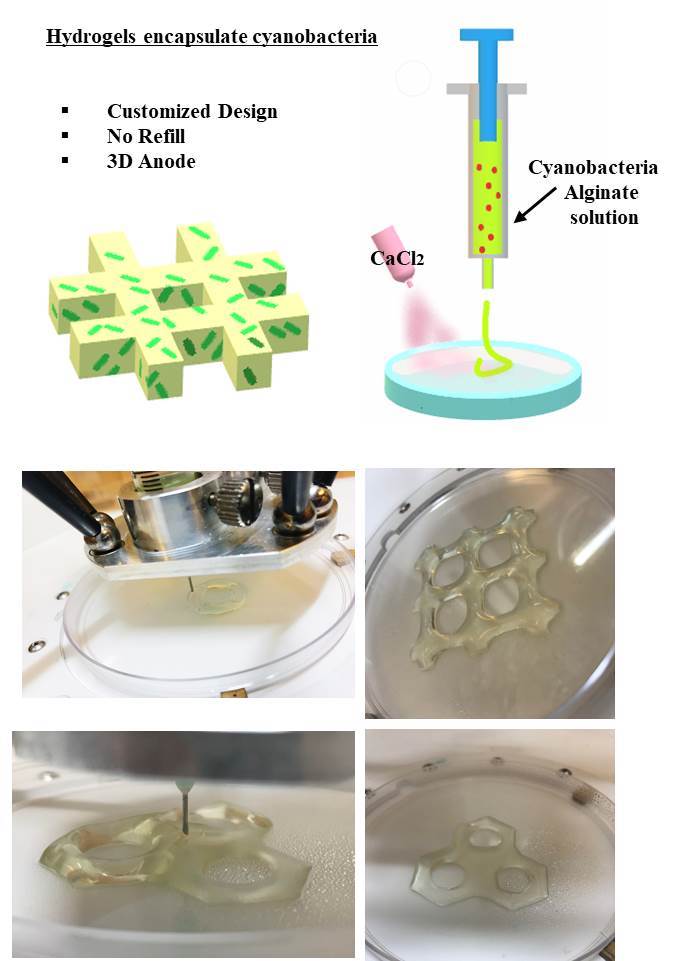|
3-D printed bioelectronics

|
In this project, we demonstrate a hybrid biological photovoltaic device by forming a 3D cooperative biofilm of cyanobacteria and heterotrophic bacteria. 3D bioprinting technique was applied to engineer a cyanobacterial encapsulation in hydrogels over the heterotrophic bacteria. The device continuously generated bioelectricity from the heterotrophic bacterial respiration with the organic biomass supplied by the cyanobacterial photosynthesis. This innovative device platform can be the most suitable power source for unattended sensors, especially for those deployed in remote and resource-limited field locations.
3D bioprinting is most notably used in diagnostic and medical applications for the purpose of tissue and organ printing. Relatively little research has been done into the field of printing three-dimensional microbial biofilms because until recently, little has been known about the specifics of microbial interactions. This bioprinting process requires careful control of sol-gel transition of the bio-ink so that the material can be inviscid sufficient to hold its shape when patterned on a substrate. At the same time, the bio-ink should be readily extruded out of a print nozzle while the cell viability must be preserved by reducing the shear forces on bacterial cells. In this work, alginate hydrogels for cyanobacterial cells were prepared by using ionic crosslinking of alginate with calcium ions. The concentration of alginate and calcium cross-linker is a critical factor to form a sophisticated structure. We chose 6% (w/v) alginate in DI water with 0.5M calcium chloride. With the higher calcium concentration, the diffusion time required for the sol-gel transition increased, leading to higher shear stress on the cells. Various multilayered patterns could be printed with this bio-ink because the reaction rate was slow enough to deposit partial uncrosslinked alginate on the crosslinked layer. Furthermore, the selected condition enabled excellent cell viability.
|

